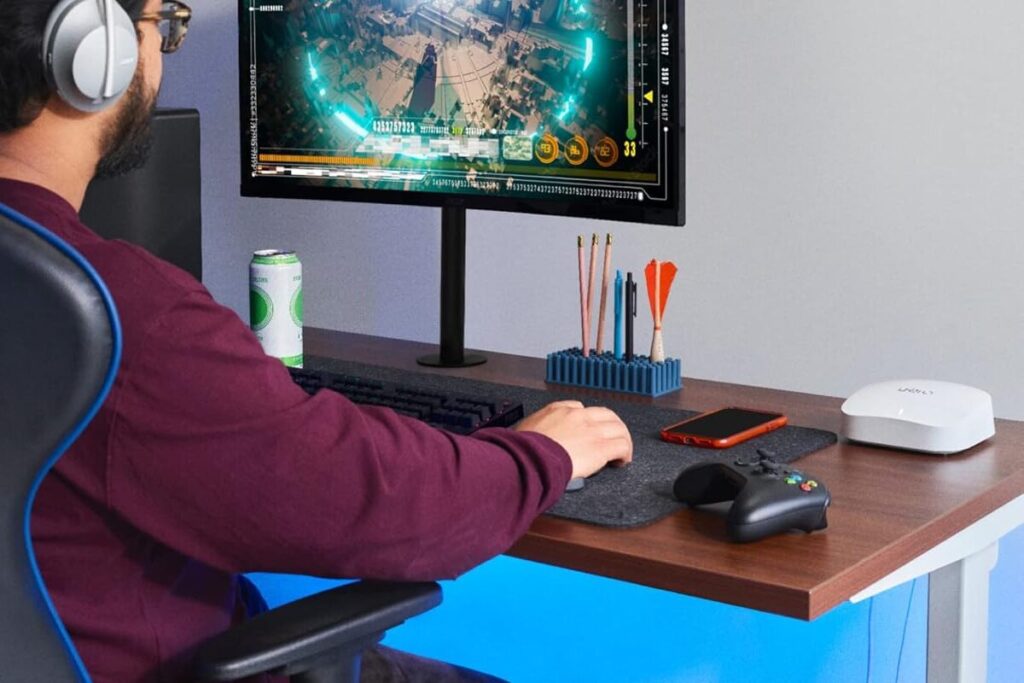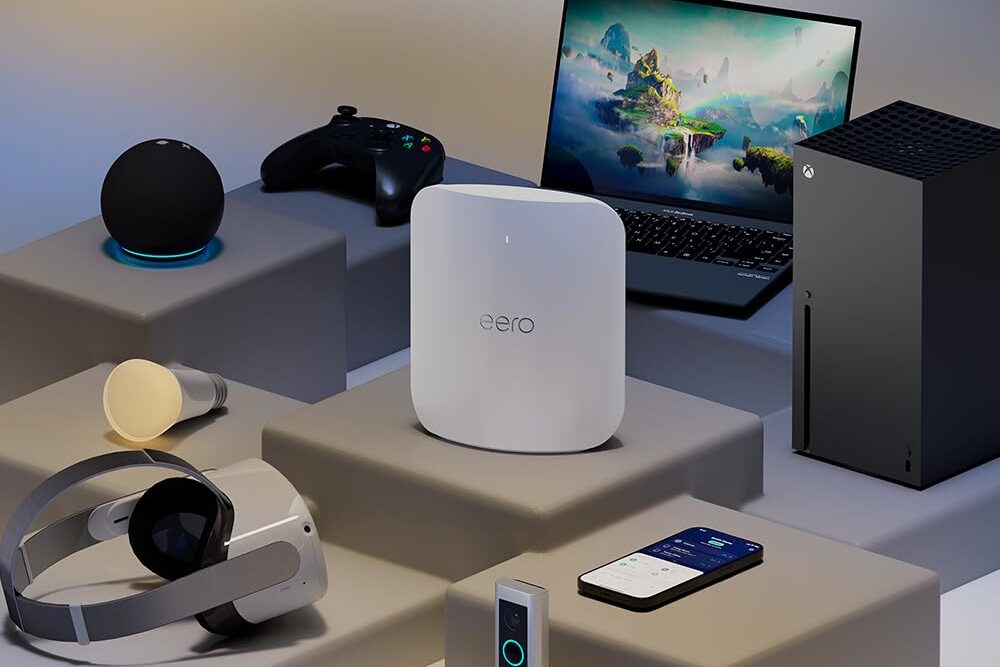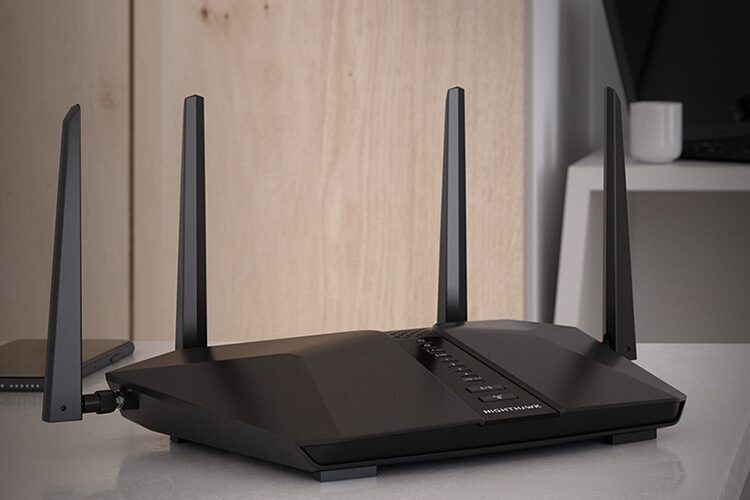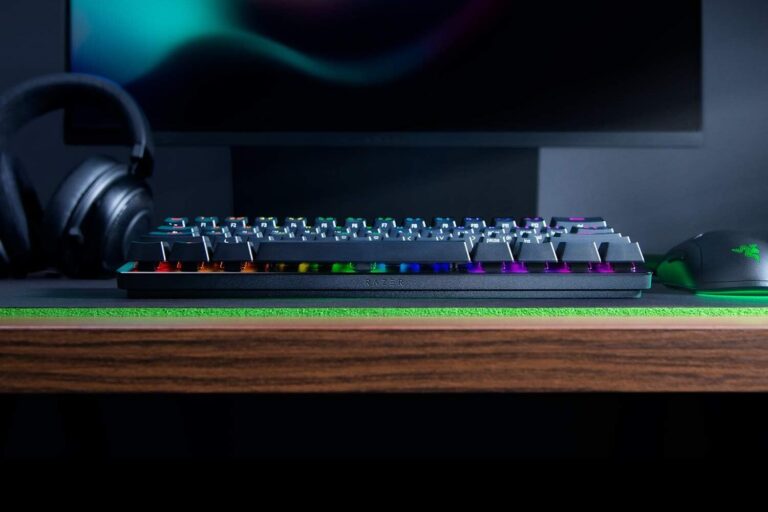Trying to understand the differences between Wi-Fi 6, Wi-Fi 6E, and Wi-Fi 7 can feel overwhelming with all the technical jargon thrown around. There’s no doubt that these newer Wi-Fi standards offer significant improvements over older generations. However, knowing which one meets your needs (and whether it’s worth upgrading) requires understanding what sets each one apart.
Don’t let it make your head spin. In this guide, we’ll break down the differences between Wi-Fi 6, Wi-Fi 6E, and Wi-Fi 7 in simple terms. We’ll cover speeds, features, real-world benefits, and help you decide if upgrading your router makes sense for your home.
Gadget Grab is supported by our awesome readers (that’s you). We may make commissions from links on our site.
Understanding Wi-Fi generations: What the numbers mean
Wi-Fi technology has evolved dramatically since its introduction in the late 1990s. Originally, Wi-Fi standards had confusing names like “802.11b” or “802.11ac” that didn’t make much sense to average consumers. In 2018, the Wi-Fi Alliance introduced a simpler naming system using numbers instead: Wi-Fi 4 (formerly 802.11n), Wi-Fi 5 (formerly 802.11ac), and so on.
Each new generation brings faster speeds, better handling of multiple devices, and improved performance in crowded wireless environments. The jump from Wi-Fi 5 to Wi-Fi 6 was significant. The newer Wi-Fi 6E and Wi-Fi 7 standards take wireless connectivity to entirely new levels. These improvements matter because our homes now contain dozens of devices, from smartphones and laptops to smart TVs, security cameras, and voice assistants. All of these connected devices compete for bandwidth.

Wi-Fi 6: The foundation of modern wireless
Wi-Fi 6 (technically 802.11ax) launched in 2019 as a major upgrade to the previous Wi-Fi 5 standard. The key innovation of Wi-Fi 6 isn’t just raw speed, but rather how it handles multiple devices simultaneously. It introduced technologies like OFDMA (Orthogonal Frequency Division Multiple Access) and MU-MIMO (Multi-User, Multiple-Input, Multiple-Output). These innovations allow your router to communicate with several devices at once instead of switching rapidly between them.
In real-world terms, Wi-Fi 6 delivers theoretical maximum speeds up to 9.6 Gbps (compared to 3.5 Gbps on Wi-Fi 5), though actual home speeds are typically much lower. The true benefits come in homes with many connected devices. Here, Wi-Fi 6 routers can maintain stronger, more reliable connections when everyone is streaming, gaming, and video calling simultaneously. Most flagship smartphones, laptops, and tablets released since 2020 support Wi-Fi 6, making it the current mainstream standard.
Wi-Fi 6E: The expanded spectrum upgrade
Wi-Fi 6E isn’t an entirely new generation but rather an extension of Wi-Fi 6, hence the “E” for “Extended.” The critical difference is that Wi-Fi 6E adds support for the 6GHz frequency band, in addition to the 2.4GHz and 5GHz bands used by previous standards. This change represents the first major frequency addition to Wi-Fi in over 20 years.
The 6GHz band is like getting a brand new, uncongested highway for your wireless data. While the 2.4GHz and 5GHz bands are crowded with signals from neighboring networks, Bluetooth devices, and other wireless equipment, the 6GHz band is relatively empty. This means Wi-Fi 6E devices can communicate with less interference, resulting in more stable connections and lower latency. The tradeoff is that higher-frequency 6GHz signals don’t travel quite as far through walls and floors compared to 2.4GHz signals. As a result, coverage area might be slightly reduced in some homes.
Wi-Fi 7: The next generation powerhouse

Wi-Fi 7 (802.11be) represents a genuine leap forward in wireless technology. While Wi-Fi 6E added a new frequency band, Wi-Fi 7 completely reimagines how those bands are used. The most exciting innovation is Multi-Link Operation (MLO). This allows devices to transmit and receive data over multiple frequency bands simultaneously. Previous standards could only use one band at a time for each device.
Speed improvements with Wi-Fi 7 are dramatic, with theoretical maximum throughput reaching 46 Gbps (nearly five times faster than Wi-Fi 6). It also supports wider 320MHz channels (double the 160MHz in Wi-Fi 6/6E) and more efficient data encoding. For everyday users, this translates to nearly instant downloads, imperceptible lag during video calls, and buffer-free streaming even at the highest quality levels. Wi-Fi 7 devices began appearing in early 2023, but widespread adoption is still in progress as manufacturers roll out compatible routers and devices.
Speed comparison: Wi-Fi 6 vs Wi-Fi 6E vs Wi-Fi 7
When comparing these standards by raw speed, the numbers tell a clear story. Wi-Fi 6 tops out at 9.6 Gbps, while Wi-Fi 6E maintains this same maximum but with less interference. Wi-Fi 7 dramatically increases the ceiling to 46 Gbps. However, these are theoretical maximums that you’ll never actually see in real-world usage.
In practical home environments, Wi-Fi 6 typically delivers between 500-800 Mbps in optimal conditions. Wi-Fi 6E performs similarly, but maintains these speeds more consistently even in device-heavy households. Early Wi-Fi 7 testing shows real-world speeds frequently exceeding 1-2 Gbps, which is faster than most home internet connections. The most noticeable improvement across generations isn’t just download speed. It also improves latency (response time) and reliability, especially when multiple people are using the network simultaneously.
Key differences at a glance
Here’s a quick breakdown of how Wi-Fi 6, Wi-Fi 6E, and Wi-Fi 7 compare:
| Feature | Wi-Fi 6 | Wi-Fi 6E | Wi-Fi 7 |
|---|---|---|---|
| Release Year | 2019 | 2021 | 2023–2024 |
| Frequency Bands | 2.4 GHz, 5 GHz | 2.4, 5, 6 GHz | 2.4, 5, 6 GHz |
| Top Speed (theoretical) | ~9.6 Gbps | ~9.6 Gbps | ~46 Gbps |
| Device Support | Widespread | Growing | Limited (early) |
| Best For | General use | Crowded homes | High-performance setups |
Is upgrading worth it? Determining which standard you need
Deciding whether to upgrade depends largely on your current setup and specific needs. If you’re still using a Wi-Fi 5 (or older) router, moving to even a basic Wi-Fi 6 router will provide noticeable improvements, especially if you have many connected devices in your home. The jump in performance justifies the investment for most households.
Upgrading from Wi-Fi 6 to Wi-Fi 6E makes sense if you live in a congested wireless environment (like an apartment building), have gigabit internet service you want to maximize, or use bandwidth-intensive applications like virtual reality or 4K/8K streaming. For the average user with a relatively new Wi-Fi 6 router, the benefits might not justify the cost just yet. As for Wi-Fi 7, unless you’re an early adopter with specific high-bandwidth needs, waiting until more devices support the standard (and prices drop) is probably the sensible approach.

Setting up your new Wi-Fi: Optimization tips
Once you’ve chosen a new router, proper setup can significantly impact your wireless performance. Router placement is crucial. Position it centrally in your home, elevated if possible, and away from other electronics that might cause interference. Many modern routers handle band selection automatically. However, you can create separate network names for your 2.4GHz, 5GHz, and 6GHz bands if you want to manually connect certain devices to specific bands.
Remember that your network is only as fast as your slowest component. A blazing-fast Wi-Fi 7 router won’t improve performance on older devices that don’t support the new standard. On the other hand, newer standards are backward compatible. Your old devices will still work; they just won’t benefit from the latest features. Consider prioritizing upgrades for the devices you use most intensively, like your primary laptop or gaming console, to take advantage of speed improvements before upgrading everything.
FAQ: Wi-Fi 6, 6E, and 7 explained
Is Wi-Fi 7 backward compatible with older devices?
Yes, Wi-Fi 7 routers are fully backward compatible with all previous Wi-Fi generations. This means your older phones, laptops, and smart home devices will continue to work with a new Wi-Fi 7 router. However, to experience the benefits of Wi-Fi 7 (like faster speeds and lower latency), both your router and the connected device need to support Wi-Fi 7.
Think of it like buying a new 8K TV; you can still watch regular HD content on it, but to see true 8K quality, you need both 8K-capable equipment and 8K content. Similarly, your Wi-Fi network will operate at the highest standard that both devices support. For example, a Wi-Fi 6 phone connecting to a Wi-Fi 7 router will use Wi-Fi 6 capabilities.
What’s the difference between 2.4GHz, 5GHz, and 6GHz bands?
These frequency bands represent different “highways” that your wireless data can travel on, each with unique characteristics. The 2.4GHz band has been around the longest and travels farthest through walls and obstacles, but it’s more congested and offers lower speeds. Many household devices like microwaves, baby monitors, and Bluetooth gadgets also use 2.4GHz, creating potential interference.
The 5GHz band, introduced with Wi-Fi 4, provides faster speeds and less congestion but doesn’t penetrate walls as effectively. Wi-Fi 6E added the 6GHz band, which offers the fastest speeds and least congestion, but has even shorter range than 5GHz. Modern routers support all available bands and automatically direct your devices to the most appropriate one based on their capabilities and your usage.
Do I need a new router to use Wi-Fi 6E or Wi-Fi 7?
Yes, you’ll need a new router specifically labeled as supporting Wi-Fi 6E or Wi-Fi 7 to access these standards. Unlike software upgrades, these changes involve fundamental hardware differences, particularly the radio components that transmit wireless signals. Wi-Fi 6E requires hardware capable of broadcasting on the 6GHz band, while Wi-Fi 7 needs entirely new chipsets to enable features like Multi-Link Operation.
Similarly, your connected devices (phones, laptops, smart home gadgets) need built-in support for these standards to take advantage of their benefits. When shopping for a new router, look specifically for “Wi-Fi 6E” or “Wi-Fi 7” in the product name or specifications. Don’t assume a router supports these standards just because it’s new or expensive.

Which Wi-Fi standard is best for gaming and streaming?
For gaming and streaming, latency (delay) and stability are often more important than raw speed. Wi-Fi 6 provides significant improvements over Wi-Fi 5 for these activities, with more stable connections and lower latency. Wi-Fi 6E adds even better performance by utilizing the less congested 6GHz band, which can reduce lag spikes during crucial gaming moments or prevent buffering during 4K streaming.
Finally, Wi-Fi 7 takes performance to another level with Multi-Link Operation, which can simultaneously use different bands to ensure your gaming or streaming never experiences interruptions. For competitive gamers, Wi-Fi 7’s ultra-low latency capabilities make it the clear winner, though Wi-Fi 6E remains excellent for most gaming needs. If you’re still using Wi-Fi 5 or older and regularly game or stream 4K content, upgrading to at least Wi-Fi 6 will be a noticeable improvement.
When will Wi-Fi 7 become the standard for new devices?
Wi-Fi 7 began appearing in high-end routers and premium smartphones in 2023, but widespread adoption is still developing. Today, we’re seeing increasing numbers of mainstream devices incorporating Wi-Fi 7, though it will likely take until 2026 before it becomes the default in mid-range products.
The adoption cycle for new Wi-Fi standards typically takes 3-4 years from introduction to becoming commonplace. Device manufacturers usually start with flagship products before bringing the technology to more affordable options. If you’re buying a premium smartphone, laptop, or router in 2025, there’s a good chance it will support Wi-Fi 7. That said, budget and mid-range options might still feature Wi-Fi 6 or 6E for the next year or two.
Key takeaways
When comparing Wi-Fi 6 vs Wi-Fi 6E vs Wi-Fi 7, the differences come down to more than just speed. Wi-Fi 6 brought significant improvements in handling multiple devices. Wi-Fi 6E added an entirely new 6GHz frequency band with less congestion. Finally, Wi-Fi 7 revolutionizes connectivity with simultaneous multi-band operation and dramatically faster speeds.
For most households, Wi-Fi 6 represents a solid baseline that will handle typical internet usage well. Wi-Fi 6E makes sense for those in congested wireless environments or with gigabit internet connections. Wi-Fi 7 offers future-proofing and the absolute best performance, particularly for demanding applications like gaming, VR, and 8K streaming, though at a premium price point. Whichever standard you choose, proper router placement and keeping your most-used devices updated will help you get the most from your wireless network.








